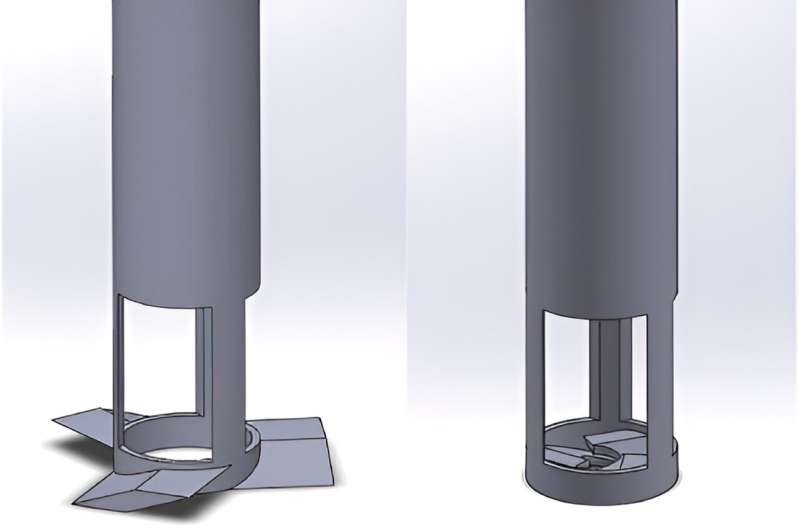This article has been reviewed according to Science X's editorial process and policies. Editors have highlighted the following attributes while ensuring the content's credibility:
fact-checked
peer-reviewed publication
trusted source
proofread
Device that withstands 1,400°C temperatures could improve solar energy production

An innovative probe which can operate in temperatures as high as molten lava has been created by researchers.
The team from the University of Bristol and CEA Commissariat à l'Energie Atomique in France have designed and successfully tested rotary blades for generating flow in molten silicon, crucial for industries such as steel or nuclear which rely on molten metal control and impurity detection.
Traditional lab analysis is slow, costly, and lacks real-time data. The scientists set out to develop a method for real-time impurity detection with a very low detection limit, the lowest true concentration, that will almost always be detected in molten silicon used for solar cells, tackling challenges like high temperatures environment and the presence of vapors and oxides.
Lead author Dr. Younes Belrhiti senior research associate from Bristol's School of Electrical, Electronic and Mechanical Engineering said, "Our study introduced an innovative high-temperature probe based on mechanical stirring, ensuring a clean, representative and stable surface for real-time chemical analysis of molten silicon."
Spectroscopy techniques involve the measurement and analysis of the interaction between electromagnetic radiation and matter to provide insights into the composition, structure and properties of substances. LIBS (laser-induced breakdown spectroscopy) is a remote and fast spectroscopic technique that can be applied to any material (liquid, solid and aerosol).
Recently, its application to metallurgical melts has known an increasing interest in controlling the melt. However, LIBS applications based on performing laser ablations on the top of a liquid present drawbacks due to the lack of renewal and stability of the analyzed surface. The bath surface exposed to the furnace atmosphere may be chemically modified (oxidized or nitrated) leading to the presence of a slag so it is not representative of the chemical composition of the melt.
At high temperatures, vapors may interfere with a spectroscopy laser beam. In some cases, the spectrum emitted by the plasma can be masked by the hot metal emissions as it behaves like a black body. Considering these difficulties, several devices have been developed to apply LIBS on molten metals which have some limitations such as instability.
In this study, "Mechanical stirring: Novel engineering approach for in situ spectroscopic analysis of melt at high temperature," published in the journal Heliyon, a mechanical stirring of the melt by innovative rotary blades is proposed to be combined with LIBS. Their rotation will generate a representative, renewed, and stable surface as the target of the LIBS laser for an in-situ analysis at high temperatures.
Dr. Belrhiti added, "We designed and tested innovative rotary blades for generating flow in molten silicon. Then, we developed the associated probe coupled with the spectroscopic technique LIBS, ensuring its functionality in high-temperature conditions.
"The developed probe offers a faster and more cost-effective way to detect impurities in molten materials used for solar cells, thanks to innovative mechanical stirring and spectroscopy that ensures accurate real-time analysis, paving the way for more efficient solar energy production."
The mechanical stirring-based probe enables efficient impurity detection in molten silicon, enhancing the quality control of photovoltaic cells. This technology can be adapted for various high-temperature applications beyond solar cells, such as in steel and nuclear industries.
Having validated their method on molten silicon, their next step is to explore its application in other high-temperature environments, broadening its potential industrial uses.
More information: Y. Belrhiti et al, Mechanical stirring: Novel engineering approach for in situ spectroscopic analysis of melt at high temperature, Heliyon (2024). DOI: 10.1016/j.heliyon.2024.e25626

















